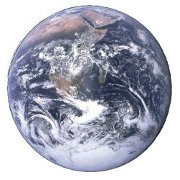
Custom Search
Animals in Cocos (Keeling) Islands
The Cocos (Keeling) Islands consist of two tiny atolls and a scattering of even smaller coral islands located in the Indian Ocean over 2,000 kilometers northwest of Australia. Almost as isolated as the more famous Galapagos Islands, the Cocos (Keeling) Islands are largely covered in coconut plantations, and much of the original native vegetation has been lost since Charles Darwin visited these islands in 1836.
There are no native land mammals on the Cocos (Keeling) Islands. Rats and mice came ashore with early settlers and are still present on the southern atoll. Other non-native mammals - rabbits and Asian deer - were introduced but died out. The class mammalia is represented solely by marine mammals. Several species of dolphins and whales are commonly seen, as well as dugong, or sea cow.
dugong, or sea cow.
The Cocos (Keeling) Islands are home to several species of geckos and one species of snake, but it is believed that these are not native to the islands. Marine reptiles include two species of sea snakes and five species of endangered turtles, notably the leatherback sea turtle, which is the largest of all living sea turtles and can reach weights in excess of 2,000 pounds.
The Cocos (Keeling) Islands are a natural haven for seabirds, but the islands are also famous for harboring the last remaining population of the endangered Cocos Buff-banded Rail. Approximately one thousand of these rare native birds can be found on North Keeling Island, which lies completely within the boundaries of Pulu Keeling National Park. The park, which was established in 1995, serves as a breeding ground for seabirds, many of which had been hunted to near extinction by passing mariners as well as Malay fishermen. Rare sea turtles as well find a safe refuge within the park boundaries.
There are no native land mammals on the Cocos (Keeling) Islands. Rats and mice came ashore with early settlers and are still present on the southern atoll. Other non-native mammals - rabbits and Asian deer - were introduced but died out. The class mammalia is represented solely by marine mammals. Several species of dolphins and whales are commonly seen, as well as

The Cocos (Keeling) Islands are home to several species of geckos and one species of snake, but it is believed that these are not native to the islands. Marine reptiles include two species of sea snakes and five species of endangered turtles, notably the leatherback sea turtle, which is the largest of all living sea turtles and can reach weights in excess of 2,000 pounds.
The Cocos (Keeling) Islands are a natural haven for seabirds, but the islands are also famous for harboring the last remaining population of the endangered Cocos Buff-banded Rail. Approximately one thousand of these rare native birds can be found on North Keeling Island, which lies completely within the boundaries of Pulu Keeling National Park. The park, which was established in 1995, serves as a breeding ground for seabirds, many of which had been hunted to near extinction by passing mariners as well as Malay fishermen. Rare sea turtles as well find a safe refuge within the park boundaries.
Dolphins, porpoises, and whales in Cocos (Keeling) Islands
Pygmy killer whale Blainville's beaked whaleBats in Cocos (Keeling) Islands
Wrinkle-lipped free-tailed bat Least pipistrelle Information about the animals living in Cocos (Keeling) Islands is brought to you by "List of countries of the world", your first stop in discovering all countries and animals of the world.
Information about the animals living in Cocos (Keeling) Islands is brought to you by "List of countries of the world", your first stop in discovering all countries and animals of the world.The animals displayed on this page are grouped in their scientific order. View also countries of the world ordered by:
- List of TLD's
- Country dialling codes
- Population
- Kilometers of coastline
- Square kilometers of land
- Square kilometers of water
- Birth rate
- Death rate
- Irrigated land
- Countries starting with A
Privacy policy